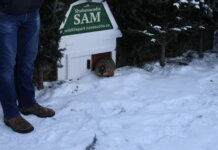HALIFAX: Environment Canada issued a winter storm watch Sunday afternoon Feb. 11 for a possible storm Tuesday into Wednesday Feb. 13-14. It was issued at 3:42 p.m.
In its forecast, Environment Canada said a potential snowfall accumulations of 20 to 30 cm by noon Wednesday Feb. 14, Valentine’s Day. Maximum wind gusts northerly 60 to 70 km/h giving areas of blowing snow are also expected.
The forecast is for most of Nova Scotia, with it expected to begin spreading across the province from Tuesday afternoon to Tuesday evening.
ADVERTISEMENT:
The conditions in the province are expected to improve from west to east on Wednesday.
Environment Canada said its’ forecast guidance is beginning to give a clearer picture regarding a nor’easter passing south of the province mid-week.
“At this time, the most likely scenario appears to be 20 to 30 cm of snowfall accumulation for most of the province by noon Wednesday,” the winter storm watch said. “Any fresh snow from this system has the potential to combine with strengthening northerly winds to reduce visibilities in blowing snow.”
They noted that as with all nor’easters, small changes in the storm track can result in large changes in the snowfall forecast, and this alert will be updated periodically to reflect the latest information.
ADVERTISEMENT:
Behind this system, a prolonged period of onshore flurries and snow squalls looks likely develop.
This will happen over portions of northeastern mainland Nova Scotia and northern Cape Breton.
These areas could continue to see accumulating snow into Thursday night.
Rapidly accumulating snow could make travel difficult over some locations.
ADVERTISEMENT:
Public Safety Canada encourages everyone to make an emergency plan and get an emergency kit with drinking water, food, medicine, a first-aid kit and a flashlight.
For information on emergency plans and kits go to getprepared.gc.ca.
Please continue to monitor alerts and forecasts issued by Environment Canada.
To report severe weather, send an email to NSstorm@ec.gc.ca or tweet reports using #NSStorm.



































